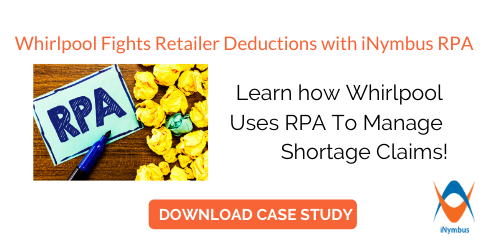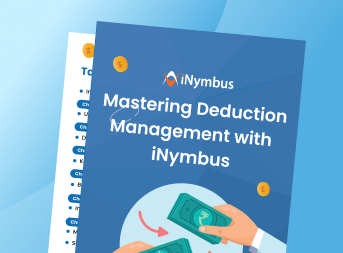
Amazon charges its vendors deductions for virtually anything and everything they can. If they pick up packaging issues, shipping inconsistencies, or even technical errors in EDI transmissions, you could be the next vendor to spot a chargeback in your Vendor Central portal.
Knowing how to protect yourself from chargebacks is an essential part of your deduction management process as a vendor. Essentially, these chargebacks are operational penalties that Amazon deducts from your payments. You need to know how these fees will impact your account and your bottom lines. Then you need to create a deduction management strategy to avoid incurring these chargebacks in the first place.
Sounds simple? It can be!

Understanding Chargebacks
Chargebacks, also known as charge disputes, occur for many reasons, usually relating to vendors not following Amazon’s strict compliance requirements. Amazon charges varying fees for each operational violation it deems its vendors have committed.
You can view your chargebacks by logging in to your Amazon account through the Vendor Central portal. The deductions are viewable in two different areas under the Payments tab:
- Remittance. All payments and deductions are itemized on Amazon once a check opens. Chargebacks will be listed as deductions from invoiced totals. You can select payment numbers under the Remittance tab and view the categories under which your chargebacks fall, as well as their amounts.
- Vendor Operational Performance. This tab gives you a complete view of all of your charge totals and types for the last calendar year. It also gives you a comprehensive breakdown of your operational strengths and opportunities to improve.
You can view your Non-Compliance Performance information at the top left-hand corner of the screen, where your chargeback fees and categories are listed.

The Types of Chargebacks Amazon Charges
There are six main types of deductions that Amazon charges its vendors. Knowing these is essential to knowing how to protect against chargebacks and preserve your profit margins.
- PO Related Issues. These chargebacks are issued for failing to confirm POs in good time, shipping consignments outside of the shipping window, and shipping fewer or more units than what was originally ordered.
- Ships in Own Container Issues. Amazon has broadened its Frustration-Free Packaging Program stipulations in a bid to lessen waste. Vendors that don’t adhere to these rules may encounter deductions.
- Preparation Related Issues. Chargebacks in this category are assigned to vendors who do not poly-bag items into cartons or tape them closed correctly.
- Receiving Related Issues. You may be saddled with chargebacks if Amazon FC picks up absent or faulty barcode labels, missing carton information, or missing product barcodes upon receiving your shipment.
- Transportation Related Issues. Vendors who don’t set up timely routing requests before transporting their shipments will face these chargebacks.
- ASN Related Issues. Deductions may apply when vendors don’t send advanced shipping notices from Vendor Central or from their EDI partners’ platforms.
Preventing Amazon Chargebacks Through Proper
Dispute Management
Amazon chargebacks can unnecessarily eat away at your profits and leave you with increased financial pressure as a result. Here’s how you can implement good dispute management practices and avoid common reasons for revenue deductions.
PO-On-Time Problems
You might not be aware that you could receive chargebacks if you send out shipments before Amazon’s specified shipping date. You can avoid charges by adhering to the strict shipping window supplied.
PO Acknowledgement Chargebacks
As a vendor, you need to acknowledge purchase orders in Vendor Central and clearly indicate which units can be shipped within the shipping window.
You need to complete this process 12 hours after the PO arrives, even on weekends. If you are using EDI, advise your service provider to acknowledge your POs on your behalf.
Purchase Order Unit Overage
There should be no discrepancies between the number of units ordered and the number of units shipped. Assess and correct DC-level packing issues to avoid overage deductions.
Orders Unfulfilled by Cancel Date
You can avoid these chargebacks by sticking to the cancel date of your shipping window. If the number of units on order is not available by this cancel date, you must remove the units from your PO and ship whatever you have in stock.
If this is a common problem you encounter, you can request a wider shipping window from your Amazon purchasers.
Missing Carton Content Labels
You can print your carton labels under the Orders > Shipment menu of Vendor Central to correct this issue. You will need to have ASIN information ready on your purchase order as well.
Packaging Problems
You can avoid Amazon chargebacks and costly dispute management processes by packaging your shipments according to Amazon’s Packaging Certification Guidelines. You can find these guidelines under the Resource Center > Legal Documents tab of Vendor Central Issues Pertaining to ASN Vendors need to send their ASNs before the PO’s shipment is scanned at an Amazon FC.
You can send your ASN manually in Vendor Central on the same day that your package is shipped. If you use an EDI service, ask your provider to correct Amazon’s 856 mapping. Transportation and Routing Problems If you choose the Collect shipping option, you need to submit a routing request before sending your PO shipments to an Amazon FC. Requesting routing is essential if you want to avoid unnecessary charges.
Amazon may charge Pickup Accuracy chargebacks if you don’t supply freight when your carrier arrives to collect it. Or when your Collect shipments don’t arrive on the scheduled date for pickup. It’s in your best interests to send off shipments according to schedule. Delays can have negative impacts on sales and inventory management.
You need to have your shipments ready to go at 8 am on pickup day. Plus, you should make sure that an accurate freight-ready date has been entered into the routing request.
Make Prevention Part Of Your Program
Chargeback prevention should be the first priority of your deduction management process as a vendor.
There are so many reasons that you may be assigned chargebacks from Amazon, ranging from packing and shipping issues to sending fewer or more units than your order stipulates. Luckily, it’s easier to prevent these deductions than it is to navigate complex dispute management terrain.
You can learn how to protect yourself against chargebacks by following Amazon’s exacting policies and regulations and always adhering to the guidelines laid out by your retailer. However, even when best efforts are made to prevent deductions and chargebacks from occurring in the first place, they are inevitable.
Adding automation solutions to your workflow process is the most effective way to identify and resolve common issues to avoid chargebacks recurring in the future.
Learn how the iNymbus cloud robotic automation solution can bring your Amazon chargebacks to zero and keep them there.
